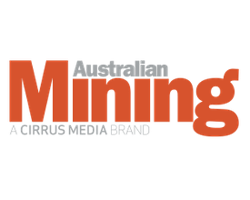Mining Industry Slams Potential Coal Snub in Finkle Review

By Matt Chambers
June 5, 2017 - The mining industry has hit out at plans for a low-emissions target to be recommended this week in the Finkel review of the National Electricity Market, saying that ruling out new, more efficient coal power will compromise reliability and affordability.
The backlash comes as industry analysts predict that AGL Energy will be the company on the stock exchange hardest hit by an LET because of its ownership of Victorian brown coal power plants.
“The coal industry expresses serious concern regarding reports that the Finkel review may rule out the building of modern and super-efficient coal fired power stations and push instead for Australia to put all our eggs in the solar, wind and gas basket to meet our energy needs,” Minerals Council of Australia coal director Greg Evans said.
“An energy blueprint that strays away from coal generation or deliberately excludes its contribution in the future means higher prices and less reliable electricity for everyday Australians, industry and businesses.”
The final Finkel report, to be delivered to the Council of Australian Governments on Friday, will favor a low-emissions target that has been described as “technology neutral” but indirectly penalize coal without carbon-capture storage.
According to modelling done by Jacobs for the Climate Change Authority, an LET would reduce coal-fired power to about 20 percent of Australian generation in 2030, compared to 63 percent if things were left unchanged, and just 1 percent by 2050.
An emissions trading scheme, by comparison, would cut coal to just 5 percent of the mix by 2030.
The Finkel review will reportedly set a benchmark carbon emissions target for the industry — expected to be about 0.7 tonnes of CO2 a megawatt hour.
This would mean more efficient gas-fired generation and coal with carbon capture and storage. as we; as renewables, would receive a subsidy in the form of tradeable clean-energy certificates. Energy retailers and large industrial users would then be required to source a mandated amount of certified clean power.
RBC analyst Ben Wilson said the policy looked like it would be negative for AGL but positive for APA Group and Infigen Energy.
“We would see this development as likely most negative for AGL given the emissions intensity of Loy Yang A (at 1.28) and Macquarie Generation (at 0.94) is significantly more than the anticipated emissions intensity threshold of 0.7.”
The Loy Yang A power station in Victoria, burns brown coal and the Macquarie Generation assets in NSW burns black coal.

